Description and Identification
Graptemys nigrinoda delticola is a medium-sized turtle. Males will reach 2.75"-4.75" (7-12cm) SCL, max 4.8" (12.2cm), while females will grow to about 6.7”-8.7" (17-22cm) SCL, max 8.7" (22.1cm). The carapace dark olive to black. It is moderately keeled with spine-like projections on the first 4 vertebrals with become less pronounced with age and the posterior edge of the carapace is moderately serrated. Each pleural and marginal scute has a narrow mark that is yellow or orange in a circular or semi-circular shape. The plastron is yellow with red tints and a black pattern covering a large area. The skin of G. n. delticola is black with narrow yellow markings. The post-orbital markings are neither crescent-shaped nor laterally recurved and not connected to the head stripes like in G.n.nigrinoda. The chin and throat are marked with broad longitudinal stripes stripes and a transverse bar ("chin-strap"). The typical identifier between the two subspecies is the skin color (dark black in the Delta Map) and plastron pattern (much larger in the Delta Map). Males will have narrow heads, slightly elongated foreclaws and longer, wider tails with the cloacal opening 1/2 to 2/3 of the way down the tail and a more juvenile appearance. Females will have shorter, narrower tails and a slightly bulkier build, including their heads.
-
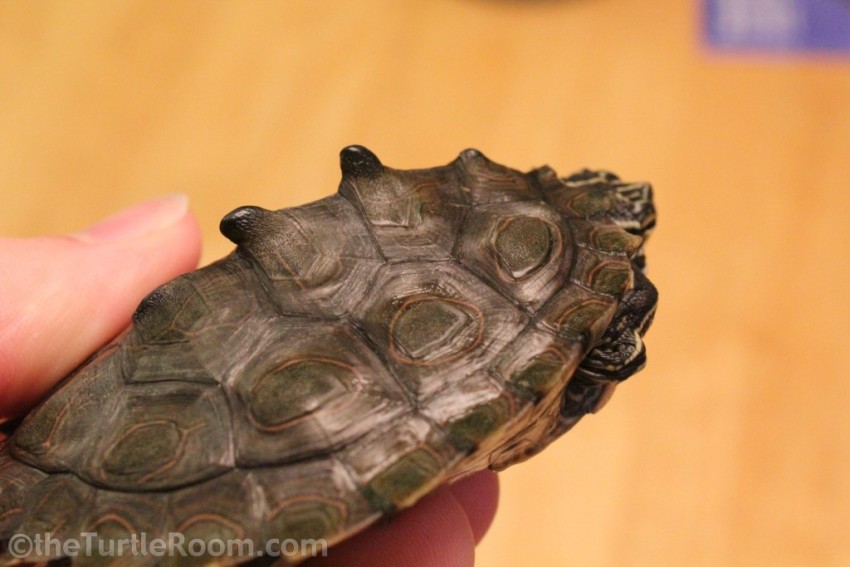 Primary ID: Knob-like projections from dorsal keel, thin rings on each pleuralPrimary ID: Knob-like projections from dorsal keel, thin rings on each pleural
Primary ID: Knob-like projections from dorsal keel, thin rings on each pleuralPrimary ID: Knob-like projections from dorsal keel, thin rings on each pleural -
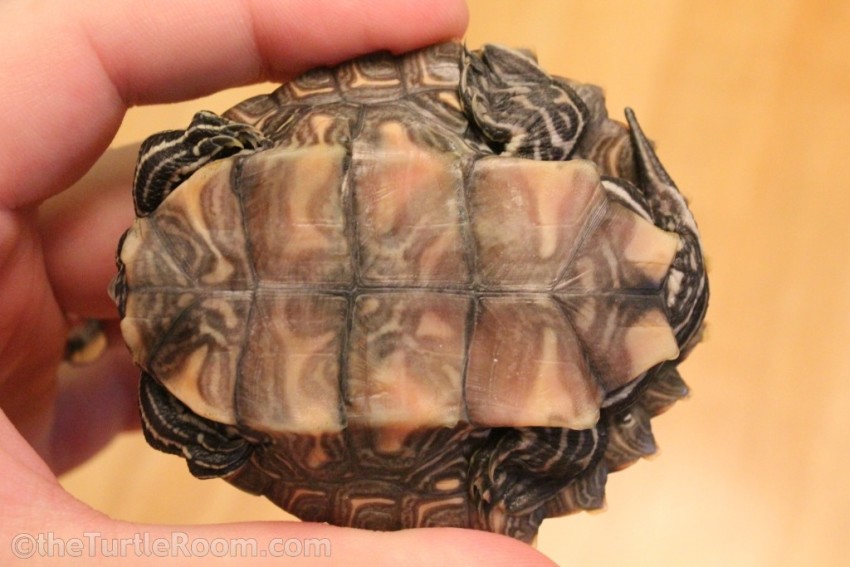 Secondary ID: Large plastral pattern (especially when compared to the other subspecies)Secondary ID: Large plastral pattern (especially when compared to the other subspecies)
Secondary ID: Large plastral pattern (especially when compared to the other subspecies)Secondary ID: Large plastral pattern (especially when compared to the other subspecies) -
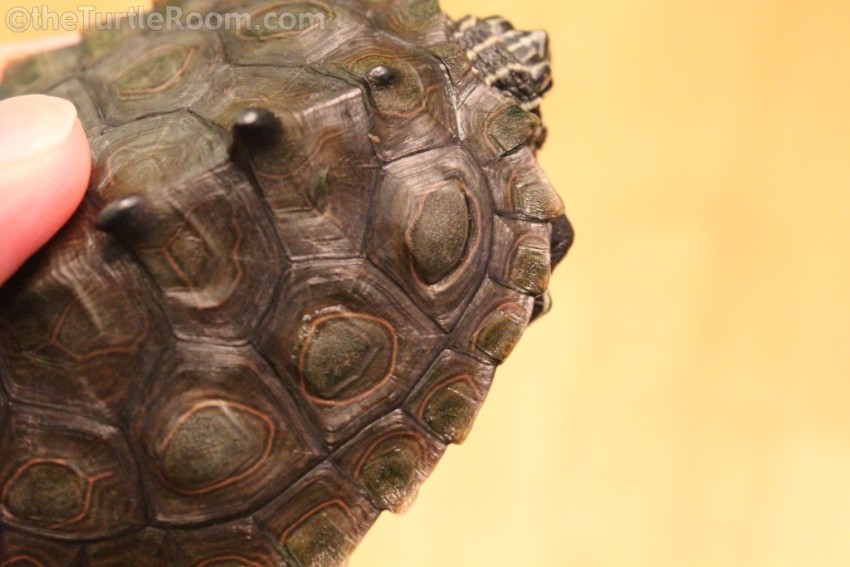
-

-

-
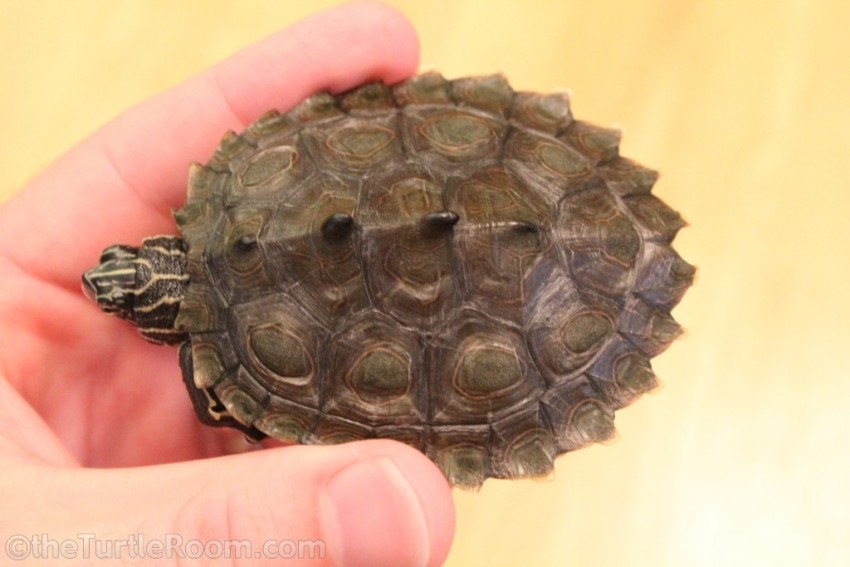
-

-

-
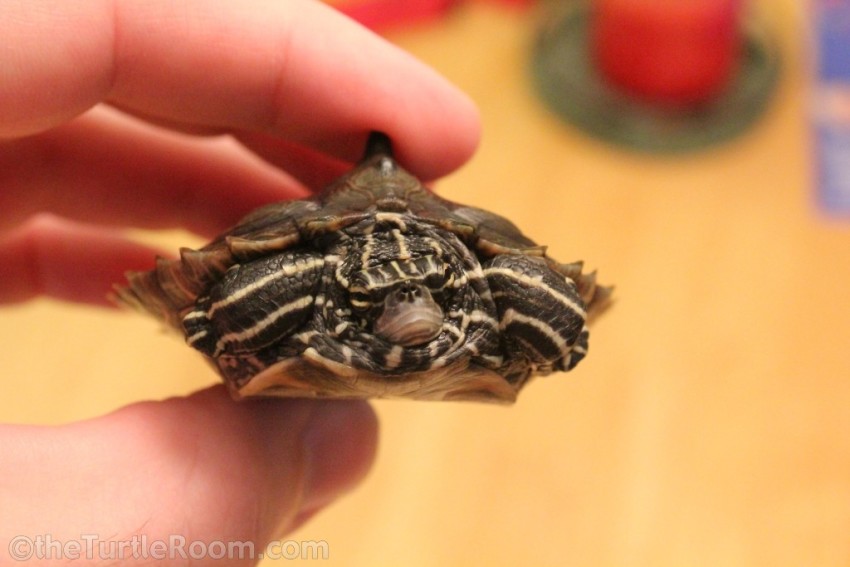
-
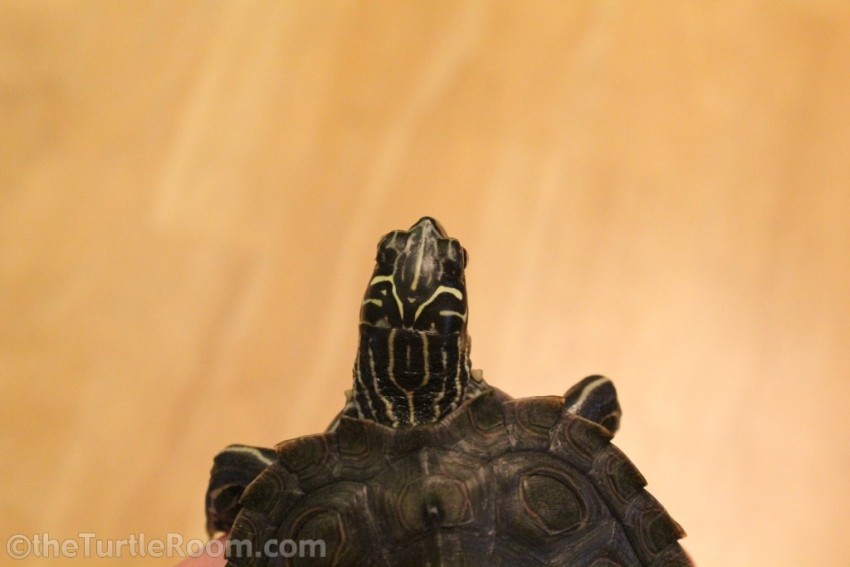
-

-
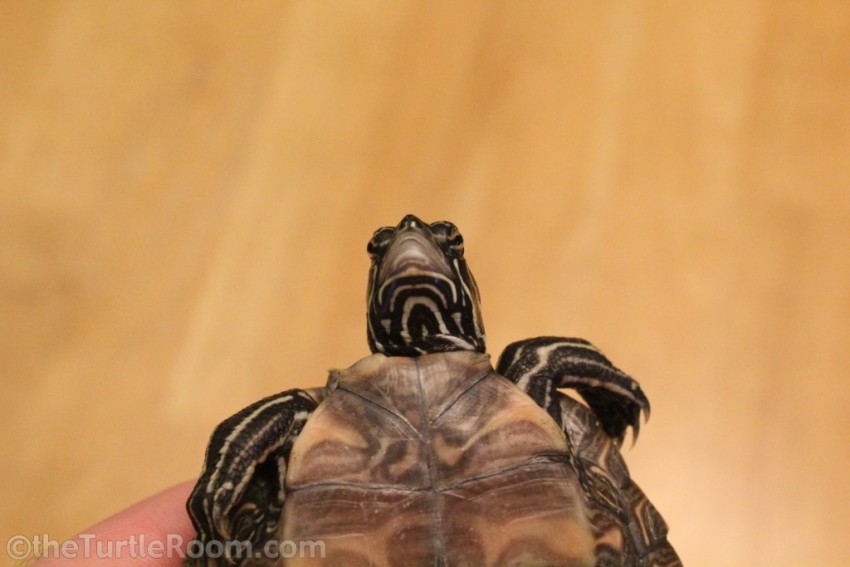
-
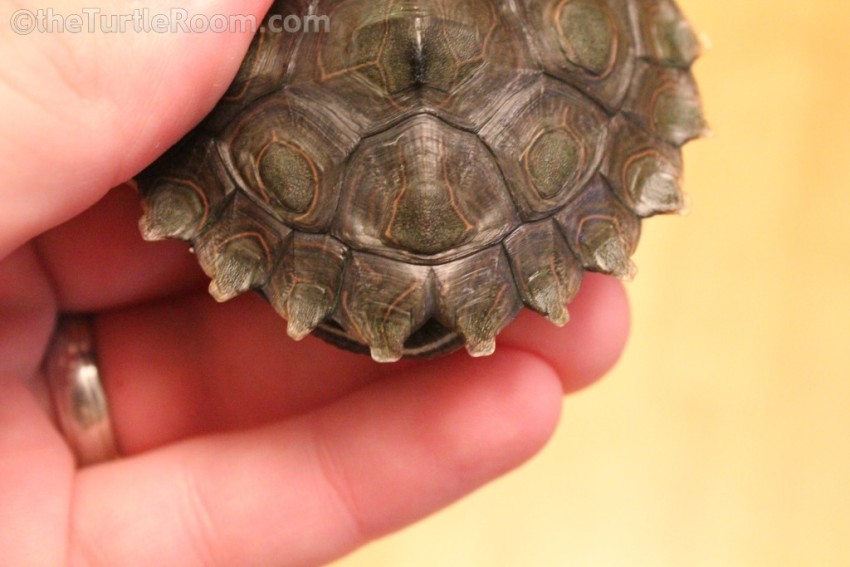
-

Distribution
The Delta Map turtle is native to the upper portion of the Mobile-Tensaw Delta occurring in the Tensaw River, Mobile River, and their tributaries. Just to the north is an intergradient population of the two subspecies. The Mobile-Tensaw River Delta is ecologically important and includes sundry habitat types, including Mesic flood plains, cypress-gum swamps, tidal brackish water marshes, bottomland forests and submersed grassbeds. It is home to some of the most diverse wildlife in the world, including 126 species of fish, 46 mammals, 69 reptiles, 30 amphibians and at least 300 species of bird -- more than 110 of which nest in the region.
Native Habitat
The habitat of G. nigrinoda ssp. is medium- to large-sized rivers and their related oxbows and bayous. These rivers typically have moderate to fast currents and contain a multitude of basking logs, brush, snags, sandbars, and open water to allow sunlight in for a large chunk of the day. The river bottom of their preferred habitat is composed of clay and/or sand. Adult G. n. delticola prefer to spend their time in the main channels, while hatchlings and small juveniles prefer the sluggish waters of sloughs, when available.
Wild Diet
The primary foods of G. nigrinoda ssp. are freshwater bryozoans, sponges, and algae. Other animal prey includes mollusks, insects (beetles, ants, and more), barnacles, snails, and clams. Algae are the only plants typically consumed. They will feed at the surface, but their preferred feeding method is grazing on the bryozoans, sponges, barnacles, and algae growing on submerged objects.
Behavior
Graptemys nigrinoda ssp. is diurnal, spending the day foraging and basking and the night sleeping on logs and piles of brush. The only time this species ventures on land is to lay eggs. Basking typically occurs on logs in the water, separated from the shoreline. On occasion, during periods of high water when their typical basking sites are underwater, they will bask on the beach. Individuals show loyalty to their basking sites, returning daily to the same basking locations. Basking happens throughout the year, but G.nigrinoda ssp. is not active at water temperatures below 50F (10C).
Reproduction
Male Delta Maps become sexually mature at approximately 2.75” (7cm) PL. The minimum PL of females at maturity is approximately 6.6” (16.7cm), but is normally closer to 6.” (17cm). In captivity, they have been reported to lay eggs as early as 5.5” (14cm) SCL. Nesting season typically runs from mid-May through early August. It is primarily a nocturnal activity. Eggs are normally deposited on sandbars within 50m of shore. G. nigrinoda ssp. typically can lay up to 3-4 clutches per year with 1 to 7 eggs and an average of 5.5 eggs per clutch. The species is suspected to demonstrate TSD-1a like the rest of the Graptemys genus.
This Care Guide is an external Care Guide. While it is possible this care guide may not be for the exact species you were looking for, it provides information suitable for your species. This Care Guide link will take you away from theTurtleRoom. We only link to care guides we trust. Thanks for visiting theTurtleRoom.org.
Care GuideIf you would like to contribute to the photo gallery of any turtle or tortoise species, please email us at [email protected]. You will be credited for any photos you contribute.
| Graptemys nigrinoda delticola |
| (Folkerts and Mount, 1969) |
| IUCN Red List: |
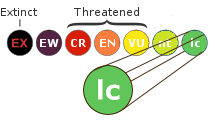 |
| Least Concern (2011) |
| Order: | Testudines |
| Suborder: | Cryptodira |
| Superfamily: | Testudinoidea |
| Family: | Emydidae |
| Subfamily: | Deirochelyinae |
| Genus: | Graptemys |
| species: | nigrinoda |
| subspecies: | delticola |
| Other Common Names: |
| Southern Black-Knobbed Map Turtle, Southern Black-Knobbed Sawback |
| Old Taxonomy: |
| Graptemys oculifera nigrinoda, Malaclemys nigrinoda |
| CITES: | Appendix III |
| U.S. Legal Status: |
| No take or possession in Alabama. |
Author:
Editors: Stephen J. Enders, Anthony Pierlioni, Chris Leone, Andrew S. Weber, Ben Forrest, and Andrew Hermes
Sources
Disclaimer: The Species Profiles - Natural History, Care Guide, and Photo Gallery database is an educational resource. It does not cover all Chelonian species in the world, nor does it include all the latest scientific information about the species covered. Though we edit our accounts for accuracy, we cannot guarantee all information in those accounts. While theTurtleRoom's staff and contributors provide references to books and websites that we believe are reputable, we cannot necessarily endorse the contents of references beyond our control.

This work by theTurtleRoom is licensed under a Creative Commons Attribution-NonCommercial-ShareAlike 4.0 International License.























































































